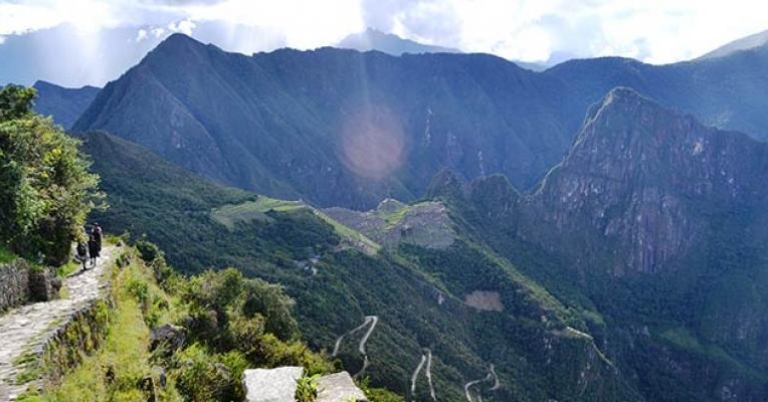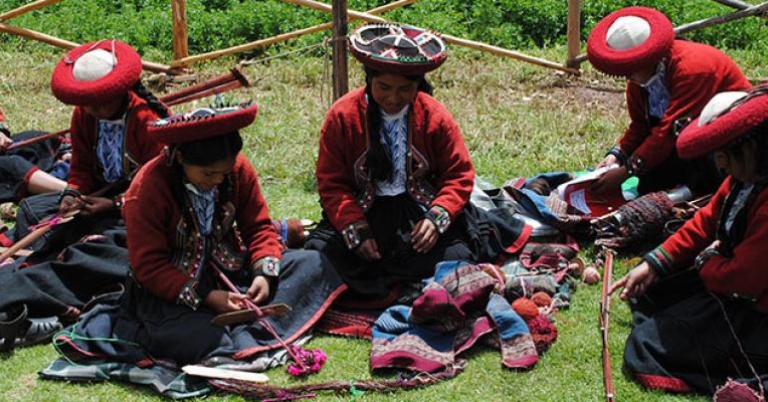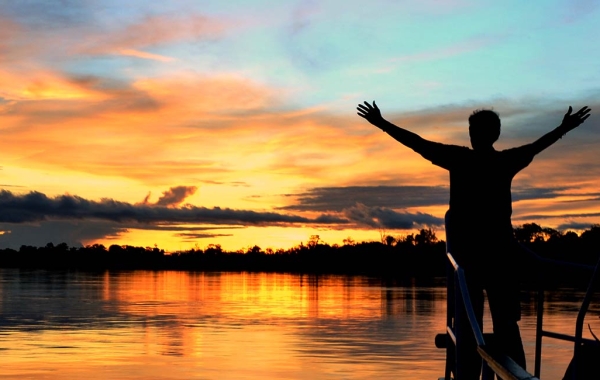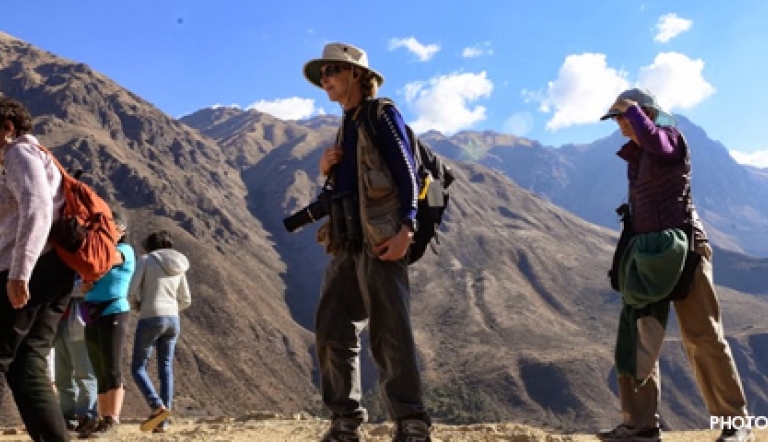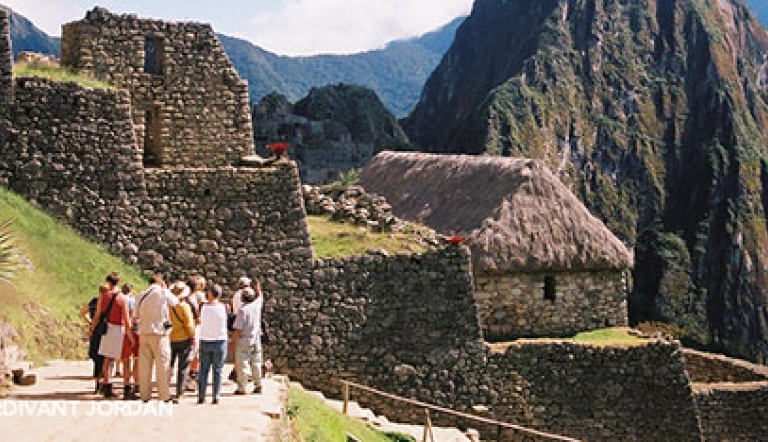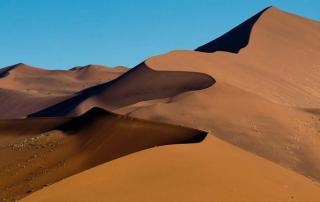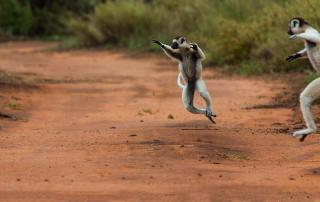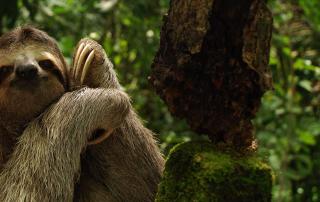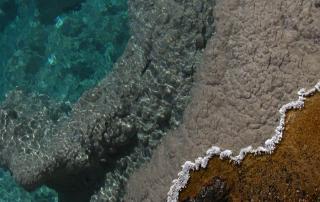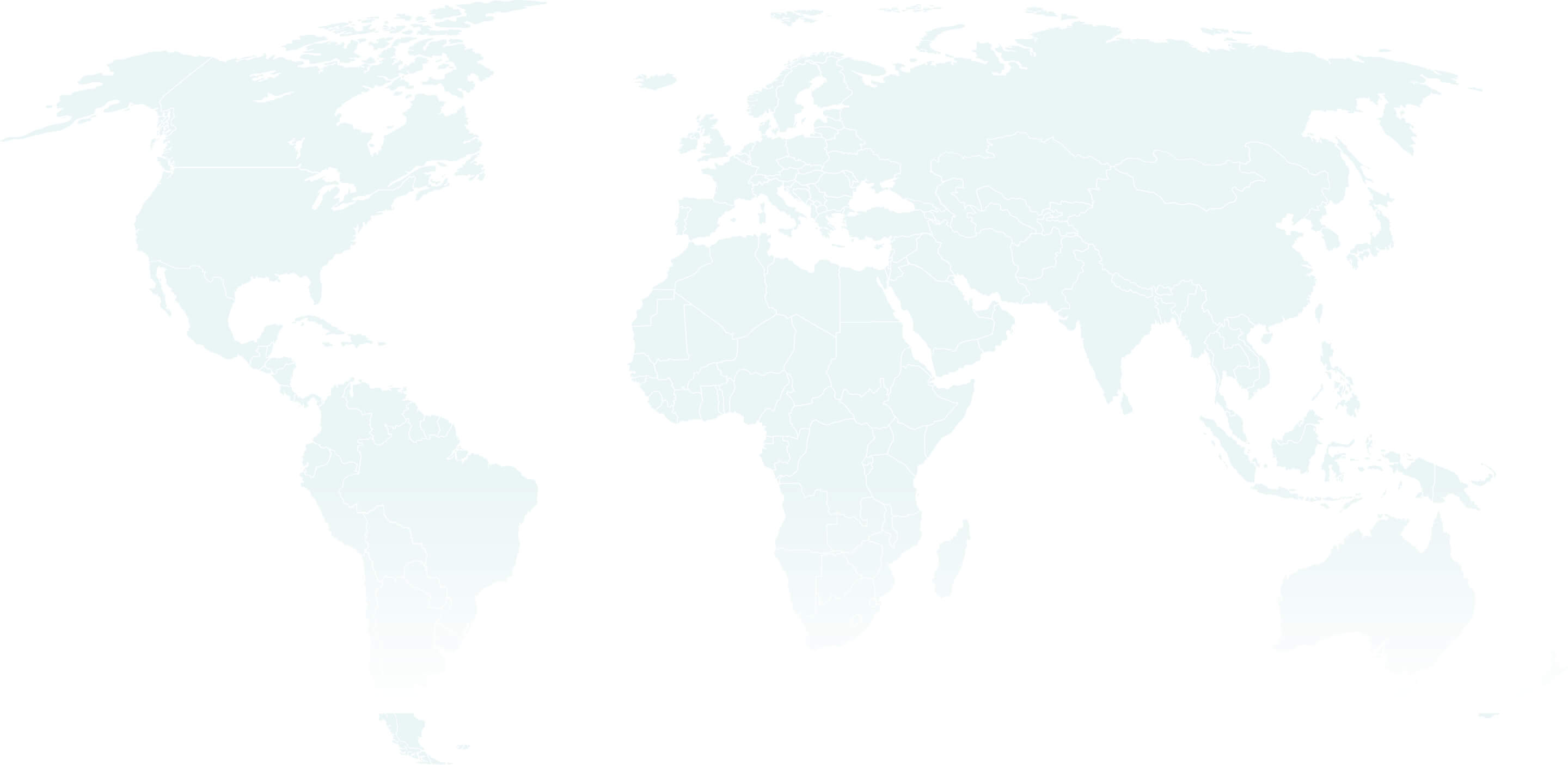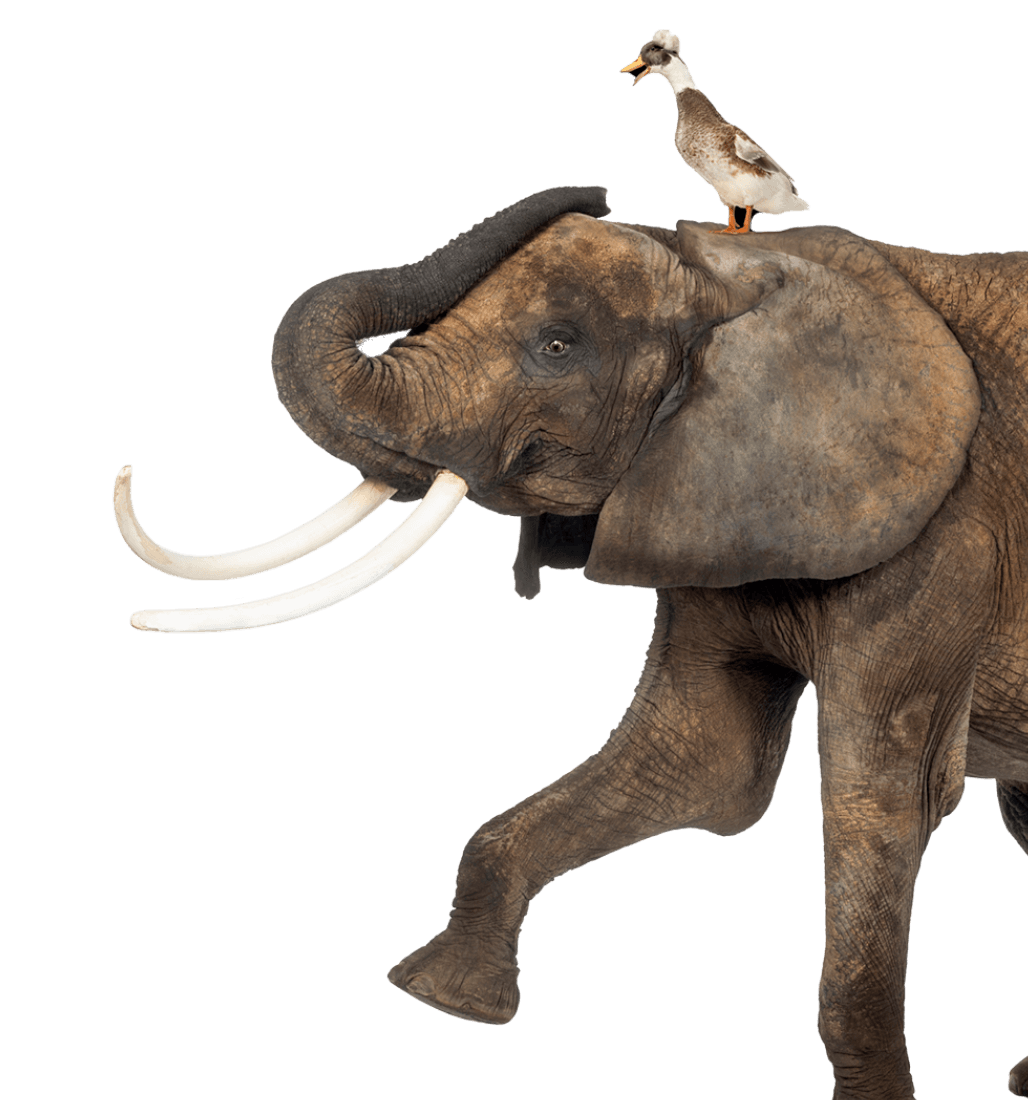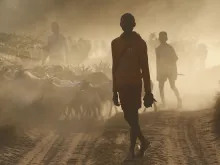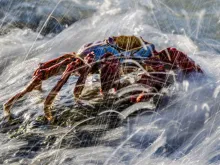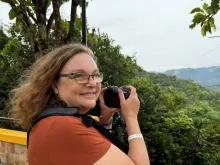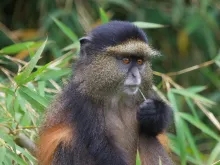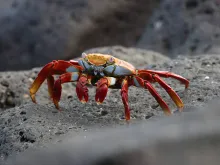From the world’s highest tropical mountains, to the world’s driest desert, the world’s most biologically diverse rainforest and the world’s most spectacular archaeological diversity, Peru presents visitors access to a full range of ecosystems and cultures, both ancient and contemporary.
Most famous for its colonial and pre-Columbian gems of Cusco and Machu Picchu, much of the country remains unexplored. With nearly 70 percent of its land covered in jungle, Peru is a frontier for new discoveries. Civilizations past and present have found a home in Peru’s historic Cusco, colonial Lima, and Amazonian Iquitos — the most populous city in the world not accessible by road. Peru has 11 UNESCO World Heritage sites, including the coastal Caral-Supe, the oldest known civilization in the Americas. In fact, with Holbrook, travelers to Peru can explore a legacy of empires, with the Incas being the most recent. New archaeological finds ongoing at Chachapoyas, Machu Picchu, and along the coast indicate that much of ancient Peru remains hidden under the surface. Holbrook, an early pioneer in travel to the region, surpasses other Peru tour companies in knowledge of the country. Holbrook was one of the first companies to lead travelers to remote Manú National Park and biosphere reserve. From the Urubamba River to the Andean highlands, as your Peru tour guide Holbrook is always on the frontier to present the true Peru and a journey of a lifetime.
Natural Wonders
Peru is South America’s third largest country, covering 800,000 square miles, and can be divided into three distinct geographic regions: the Amazon, the central high sierra of the Andes, and the coast. Here you can travel along the Amazon River to a 1.1 million acre bioreserve, which hosts the region’s most diverse populations of flora and fauna. Enjoy amazing panoramic views from treetop platforms and a canopy zip line as you examine the biodiversity inhabiting a variety of Amazonian ecosystems including riverine, restinga, swamp, varzea, and terra firme. Observe rare and endemic species like the red-faced bald uakari monkey, and learn about conservation efforts as you participate in data collection of birds, reptiles, amphibians, and mammals.
West of the Amazon River Basin, the second highest mountain chain in the world rises abruptly from a small ribbon of coastal desert. Hike through a cloud forest along the Urubamba River, a dense ecosystem home to hundreds of species of birds, butterflies, and mammals. Lake Titicaca, the highest navigable lake in the world, offers opportunities for kayaking, birding, and visiting the man-made reed islands of the Uros tribe. Along the coast, see the Mirador sea lion colony at Paracas Reserve and visit the Ballestas Islands, a breeding site for seabirds such as the Humboldt Penguin, Peruvian Booby, and Inca Tern.
Culture & Inca History
Among the most famous of Peru’s landmarks is the mysterious Machu Picchu, theorized to be a ceremonial site. Explore these ancient mountaintop ruins and the rest of the Sacred Valley as you learn about the Inca Empire. Examine the contrasts between Inca and Spanish architecture during explorations of a colonial cathedral and an Inca temple in Cusco. Explore fascinating archaeological sites including Machu Picchu and Sacsayhuaman, the fortress that forms the head of the Puma design of old Cusco; its construction remains a mystery because the stones are not found in the region and most weigh over a ton.
In Lima, Peru’s capital and largest city, you can visit the National Archeology Museum, Peru’s oldest and largest state museum. The museum displays a large collection of ceramics, textiles, sculptures, and ancient Peruvian metals dating back to pre-Hispanic times. Also visit La Catedral, the most important church in any town in Peru. This beautiful colonial building in the Plaza de las Armas presumably houses the remains of the conquistador Francisco Pizarro.
Opportunities for more in-depth cultural exchange are plentiful. Mingle with locals at the Pisac marketplace, the largest native market in the Andes. Participate in an earth payment, an ancient Pachamama ceremony custom of indigenous Andean cultures. A shaman begins the ceremony with an offering of Andean cereals, grains, and fruits with coca leaves, and ends with the ritual burning of the offering and burial of its ashes to complete the cycle. Interact with community members in a Ribereño village in the Amazon and learn about their culture and traditions.
Birds
Peru has an astonishing 1,800-plus bird species, making it a paradise for birders. Spot some of the 400-plus species of birds that fly above Machu Picchu, the lost city of the Incas. Explore the Amazonian lowlands by boat and foot to look for colorful macaws and the enigmatic Hoatzin. Discover the unique mist-fed ecosystem of Lomas de Lachay, home to the underground-nesting Burrowing Owl. Visit Pantanos de Villa, a protected area recognized by the RAMSAR Convention as an internationally important wetland for aquatic birds. Witness the seabirds of Ballestas Islands, including species such as the Humboldt Penguin, Peruvian Booby, Inca Tern, and the endangered Peruvian Diving Petrel.
Entry & Exit Requirements
U.S. and Canadian citizens must have a valid passport to enter Peru. Passports must be valid for at least six months after the date of departure. Tourists must provide evidence of return or onwards travel.
For visits fewer than 90 days, you will be issued a tourist card, called the Tarjeta Andina de Migración (TAM), upon arrival in Peru. It is important not to lose this document, as it can be time consuming and inconvenient to replace.
If you are not traveling with a U.S. passport, please check with the Embassy of Peru for the requirements based on your nationality.
Health Information
IMMUNIZATIONS
The Centers for Disease Control recommends that all travelers be up to date on routine vaccinations such as measles-mumps-rubella (MMR) vaccine, diphtheria-pertussis-tetanus vaccine, varicella (chicken pox) vaccine, and your yearly flu shot before every trip.
There are no vaccinations required for entry into Peru.
Some physicians recommend that travelers get hepatitis A and typhoid vaccines before visiting Peru.
Yellow fever is a risk in certain parts of Peru. The CDC recommends the yellow fever vaccine if you are traveling to these areas.
Please consult your physician for additional information and recommendations based on your individual circumstances.
MALARIA
The CDC warns that travelers to South America may be at risk for exposure to malaria. Malaria is caused by a parasite found in Anopheles mosquitos, which are active from dusk until dawn. Prevention is twofold: the use of anti-malarial drugs and the prevention of insect bites. If you choose to use an anti-malarial drug, as recommended by the CDC, see your physician for a prescription.
ZIKA VIRUS
Locally transmitted cases of Zika virus have been reported in Peru. Local transmission means that mosquitoes in the area have been infected with Zika and are spreading it to people. The CDC recommends that travelers to Peru protect themselves from mosquito bites. As a precaution, the CDC advises women who are pregnant to consider postponing travel to any area where Zika virus transmission is ongoing. Transmission risk is reduced in areas above 6,500 feet in elevation,
ALTITUDE SICKNESS
Upon arrival at locations of high elevation, shortness of breath and a pounding heart are normal responses to the lack of oxygen in the air. However, for some visitors, these symptoms can deteriorate into altitude sickness. Headache, extreme tiredness, dizziness, nausea, and loss of appetite are standard symptoms. Staying hydrated and well rested is important to adjust to the altitude. Avoiding heavy, fatty foods and alcohol in the days before arriving to altitude can help. Over-the-counter medications are also available to help prevent or alleviate symptoms. It’s advisable to avoid sleep medications, as they can slow breathing and respiration, which aid in getting the blood oxygenated while sleeping. Participants who take blood pressure medications should discuss this with their doctor as the medication can drop pressure too low at times.
SUN EXPOSURE
The effects of the sun can be damaging to the eyes and skin. Spending time outdoors exposes you to the sun’s harmful ultraviolet (UV) rays, even on cloudy days. To protect yourself from the sun, use a broad spectrum sunscreen of at least SPF 15, protect skin with clothing, wear a wide-brimmed hat and sunglasses, and drink plenty of fluids.
Currency
The currency of Peru is the Nuevo Sol.
Electricity
The electrical current in Peru is 220V 50Hz AC. Travelers from the United States need to use a converter.
Time Zone
The time zone of Peru is Peru Time Zone (UTC-05:00).
Peru does not observe Daylight Saving Time.
Departures and arrivals on flight schedules are listed in the local time.
Communications
PHONES
Peru’s country code is +51.
To call Peru (from the U.S.): Dial 011-51-(xx-xxx-xxxx)
To call the United States: Dial 001-(xxx-xxx-xxxx)
Please check with your cell phone provider if you’re unsure whether or not your cell phone will work internationally. Be aware that you are likely to incur additional charges for international use. It may be more affordable to purchase a local SIM card upon arrival.
INTERNET
There are many public Internet booths in Peru and some lodges offer WiFi. Connection speeds vary widely depending on your location.
Reading List
FIELD GUIDES
A Photographic Guide to the Birds of Peru
Clive Byers
This handy shirt pocket guide samples 252 species of common and spectacular birds of Lima, Cuzco, Machu Picchu, Manu and other popular destinations. Each gets a large color photograph and description but, alas, no range map.
Birds of Peru
Tom Schulenberg, Dan Stotz, John O'Neill, & Dan Lane
Gorgeously illustrated, this authoritative guide covers nearly 20 percent of the world's birds.
Birds of Peru
Robert Dean
A fold-out field guide to the birds of Peru. At 7in x 11in, it's easy to fit on your pocket. Double-sided and laminated to withstand the elements.
Peru, Travellers' Wildlife Guides
David L. Pearson & Les Beletsky
Featuring 500 illustrations of the birds, amphibians, reptiles, mammals and insects of the Amazon, Andes and Pacific Coast.
Peru Mammals
Rainforest Publications
A handy, double-sided laminated card depicting over 60 commonly encountered mammals of Peru. Beautiful and accurate full-color illustrations.
Peru, Birds of the Forest
Rainforest Publications
A handy, double-sided laminated card depicting 100 commonly encountered parrots, motmots, hummingbirds and other forest birds of Peru.
MAPS
Peru Map
Borch Maps
A detailed laminated relief map of Peru at a scale of 1:1,750,000. This is a very clear, colorful map, which also features detailed insets of Lima and Cuzco and even a site plan of Machu Picchu.
Archaeological Map of Machu Picchu
Wright Water Engineers
Ken Wright's foldout color site plan shows the monuments, topography and physical features of the Inca sanctuary with exquisite clarity.
Peru Adventure Map
National Geographic Society
A well-produced, colorful shaded relief map of Peru at a scale of 1:1,500,000.
Inca Trail: Machu Picchu, Sacred Valley, Cusco Map
Lima 2000
This fact-filled map shows the whole of the Sacred Valley, from Cusco to Ollantaytambo and Machu Picchu, on one side, and, on the reverse, the area surrounding the sanctuary in splendid, topographic detail (1:50,000). It's the best map for those making the trek from kilometer 88 to the site and an excellent choice for those exploring by bus or train.
GUIDEBOOKS
Insight Guide Peru
Insight Guides
Panoramic in scope, this illustrated overview brings Peru to life in color photographs and vivid essays on history, archaeology and culture.
Bradt Guide Trekking in Peru
Hilary Bradt
This classic guide for exploring the Andes of Peru is great for both practical trail information and general information on the region. It's a compact overview, featuring walks, treks and an extensive introduction.
Culture Smart! Peru
John Forrest
A concise, well-illustrated and practical guide to local customs, etiquette and culture.
Lonely Planet Quechua Phrasebook
Serafin M. Coronel-Molina
This shirt-pocket guide is a surprisingly thorough introduction to not just the language but also the customs and culture of the Andes.
The Inca Trail, Cuzco & Machu Picchu
Alexander Stewart
An excellent overview of local culture and history, including chapters on exploring Cuzco, the Sacred Valley and Lima. Fifth edition.
NATURAL HISTORY
Through the Eyes of the Condor, An Aerial Vision of Latin America
Robert B. Haas
This collection of stunning, oversized photographs, taken from above, shows the jungles and favellas, the reefs and ruins, wildlife and diverse landscapes of Latin America.
The Smithsonian Atlas of the Amazon
Michael Goulding, Ronaldo Barthem, & Efrem Ferreira
This beautiful, profusely illustrated atlas of the river includes its major tributaries and 150 full-color maps. Goulding (Floods of Fortune) and Brazilian biologists Barthem and Ferreira provide the accompanying text.
Tropical Nature
Adrian Forsyth & Ken Miyata
Two uncommonly observant and thoughtful field biologists offer a lucid portrait of the tropics through 17 marvelous essays that introduce the habitats, ecology, plants and animals of the Central and South American rainforests.
HISTORY & CULTURE
The Incas
Carmen Bernard
Featuring archival drawings and photographs, a chronology and chapters on Atahualpa, the Conquistadors and Hiram Bingham, this handy book (previously published as People of the Sun) illuminates the daily life, monuments and history of the Incas.
Art of the Andes, from Chavin to Inca
Rebecca Stone-Miller
This authoritative and concise illustrated survey of Andean art and architecture covers not only Machu Picchu and additional Inca monuments, but also Chan Chan, Nasca and other archaeological sites and cultures.
The Peru Reader, History, Culture, Politics
Orin Starn
Lively and literate, this meaty anthology ranges from historical accounts to modern analysis.
A Sacred Landscape, The Search for Ancient Peru
Hugh Thomson
Hugh Thomson travels all over Peru with his archaeologist pals, visiting Moche, Chavin, Nasca and other ancient sites in this thrilling account of adventure. His tale is bracketed by an account of his discoveries with Gary Ziegler at Llactapata, a newly excavated observatory barely two miles from Machu Picchu and essentially lost since Bingham happened upon the place in 1912. He concludes with wise words by John Hemming, "Anyone can find a ruin in the jungle; but it can take a lifetime to understand what you have found."
Conquest of the Incas
John Hemming
This classic prize-winning history of the Inca struggle against the Spanish invasion weaves wide-ranging, scholarly material into a gripping narrative.
Deep Rivers
Jose Maria Arguedas
Like his narrator, 14-year-old Ernesto, Arguedas (1911-1969) was a mestizo of Spanish and Quechua descent, attuned to the hardships of bridging these two worlds. Translator Horning Barraclough captures the rhythms of the challenging Spanish-Quechua original, and of Spanish as it is spoken in the rural highlands.
Lima, A Cultural History
James Higgins
An erudite guide to the cultural gems and literary history of Peru's capital city. James Higgins, who specializes in Peruvian literature, covers the scope of the city's history from its pre-Columbian museums, to its conquistador heritage, to its dynamic present.
The Andes
Jason Wilson
Starting out in Cuzco, heart of the Inca Empire, Wilson spreads north and south along the Andes, including excerpts from South American literary giants, travelers and his own impressions.
The Great Inka Road, Engineering an Empire
Ramiro Matos
An astute collection of essays on the "Qhapaq Nan" (the Great Inca Road), covering its engineering, practical uses and the great civilization that built it. Includes more than 225 full-color illustrations.
The Last Days of the Incas
Kim MacQuarrie
MacQuarrie tackles the personality, aspirations and greed of Francisco Pizarro in this vivid account of the conquest of a continent.
Machu Picchu, Unveiling the Mystery of the Incas
Richard L. Burger & Lucy C. Salazar
Burger and Salazar vividly evoke the art, architecture, culture and society of Machu Picchu in this illustrated, up-to-date survey. With Hiram Bingham's original report, archival and modern photographs and excellent chapters on recent archaeology at the site.
Between the Lines, The Mystery of the Giant Ground Drawings of Ancient Nasca
Anthony Aveni
A wide-ranging, scholarly overview of the Nasca Lines. In this book, written for a popular audience, Aveni discusses previous theories about the significance of the lines, putting forward intriguing new ideas about how the lines may have related to sources of water.
Eight Feet in the Andes
Dervla Murphy
The indomitable Murphy treks 1,300 miles through the Andes (with a mule) on the trail of the conquistadors in this spirited account.
Lost City of the Incas
Hiram Bingham
This first-rate adventure story by the man who brought Machu Picchu to the attention of the world is not just a gripping tale of exploration and archaeology, it also sets the scene for any visitor to the site.
Monuments of the Incas
John Hemming
John Hemming (Conquest of the Incas) brings the story of the Inca up to date in this revised edition of his classic photographic overview, featuring Edward Ranney's exquisitely detailed, large format black-and-white photographs of Inca sites from Ingapirca to Incallacta.
Stone Offerings
Mike Torrey
Torrey captures the dramatic setting, solitude and intricate construction of the Inca site of Machu Picchu in 100 striking color photographs taken over a few days at summer and winter solstice.
Textiles from the Andes
Penelope Dransart
Taking as its focus 30 examples from the British Museum, this generously illustrated survey covers the scope of Peruvian and other Andean textiles from ancient Paracas through the Inca and Colonial periods.
The Ice Maiden
Johan Reinhard
National Geographic archaeologist Johan Reinhard brings together tales of his own adventures and plenty of Inca history in this account of his discovery of Juanita, a 500-year-old mummy found in the Peruvian Andes.
The Incas
Adriana von Hagen & Craig Morris
Morris and von Hagen trace the rise and rule of the Inca with authority in this region-by-region survey, reconstructing the finely built palaces and temples of Cusco and life at lavish royal estates like Chinchero and Machu Picchu. With 150 mostly black-and-white photographs and illustrations, including extensive site plans.
The Incas and their Ancestors, The Archaeology of Peru
Michael Moseley
An outstanding illustrated survey of the archaeology of the Inca, Moche and Nasca civilizations. With hundreds of color illustrations and line drawings, it's an in-depth look at the ancient cultures and history of Peru. A great general introduction.
The Nasca
Helaine Silverman
This concise, authoritative book in the series Peoples of America offers much to the interested traveler.
Tree of Rivers, The Story of the Amazon
John Hemming
Hemming captures the ambition, greed and awe of naturalists, explorers and missionaries -- and their devastating impact on native peoples -- in this absorbing human history.

